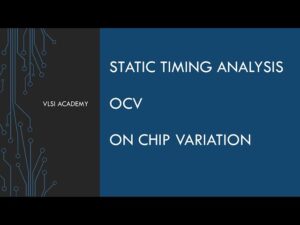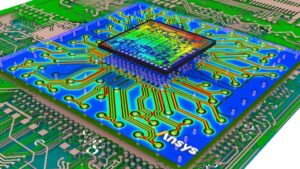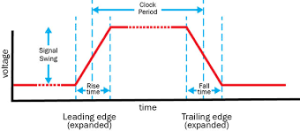UPF (Unified Power Format) Construct Example for ASIC Low-Power Design
UPF is used to define power domains, power states, isolation, retention, and level shifting in a design. Below is a practical example with explanations for each key construct.

UPF Information Model
1. Basic UPF Example: Power Domain Definition
# Load UPF library
load_upf stdcell.upf
# Define power domains
create_power_domain PD_TOP \
-include_scope \
-elements {.} # Top-level domain
create_power_domain PD_CPU \
-elements {u_cpu*} \ # All CPU hierarchy
-supply {primary_rail} # Main power supply
create_power_domain PD_MEM \
-elements {u_ram*} \ # All memory instances
-supply {mem_vdd} # Separate memory supply2. Power Supply Network
# Define power nets and switches
create_supply_net VDD -domain PD_TOP
create_supply_net VSS -domain PD_TOP # Ground
create_supply_net MEM_VDD -domain PD_MEM
create_supply_port VDD_PAD -domain PD_TOP
# Connect supplies
connect_supply_net VDD -ports VDD_PAD
connect_supply_net MEM_VDD -domain PD_MEM -supply {VDD} # Derived from VDD3. Power States & Transitions
# Define power states
add_power_state PD_CPU \
-state {ON} \
-supply {primary_rail -voltage 0.9} # Nominal voltage
add_power_state PD_CPU \
-state {OFF} \
-supply {primary_rail -voltage 0.0} # Power-gated
add_power_state PD_MEM \
-state {RETENTION} \
-supply {mem_vdd -voltage 0.3} # Low-power retention mode4. Isolation & Retention Strategies
(A) Isolation Cells (Prevent Unknowns During Power-Down)
set_isolation iso_cpu \
-domain PD_CPU \
-isolation_power_net VDD \
-isolation_ground_net VSS \
-clamp_value 0 \ # Tie outputs to 0 when OFF
-applies_to outputs
set_isolation_control iso_cpu \
-domain PD_CPU \
-isolation_signal power_enable \ # Control signal
-location parent # Isolation cell placement(B) Retention Registers (Save State During Power-Down)
set_retention ret_cpu \
-domain PD_CPU \
-retention_power_net VDD \
-retention_ground_net VSS \
-save_signal save_enable \ # Save state signal
-restore_signal restore_enable # Restore signal5. Level Shifters (Voltage Crossing)
set_level_shifter ls_mem \
-domain PD_MEM \
-applies_to inputs \ # Signals entering PD_MEM
-location self \ # Place LS inside PD_MEM
-rule low_to_high \ # 0.9V → 1.2V
-threshold 0.6 # Voltage threshold6. Power Switches (For Power Gating)
create_power_switch psw_cpu \
-domain PD_CPU \
-input_supply_port {in VDD} \
-output_supply_port {out primary_rail} \
-control_port {ctrl power_enable} \
-on_state {ON ctrl {1}} \
-off_state {OFF ctrl {0}}7. UPF Constraints for Synthesis/P&R
# Synopsys DC/ICC2 commands to apply UPF
load_upf design.upf
commit_upf # Validate and apply UPFKey UPF Constructs Summary
| Construct | Purpose | Example |
|---|---|---|
create_power_domain | Define voltage regions. | -elements {u_cpu*} |
create_supply_net | Declare power nets. | -domain PD_TOP |
set_isolation | Prevent X-propagation. | -clamp_value 0 |
set_retention | Save register state during power-off. | -save_signal save_enable |
set_level_shifter | Handle voltage crossings. | -rule low_to_high |
create_power_switch | Control power gating. | -on_state {ON ctrl {1}} |
Debugging UPF Issues
- Check Power Domain Mapping
report_power_domain -verbose- Verify Isolation/Rentention
report_isolation -all
report_retention -all- Validate Supply Connections
report_supply_networkConclusion
- UPF ensures consistent low-power implementation across RTL-to-GDSII.
- Key steps: Power domains → Supplies → Isolation → Retention → Level shifters.
- Tool support: Synopsys (DC, ICC2), Cadence (Genus, Innovus), Siemens (Catapult).

Power switch control tied off






